This tutorial is about crimping Mini-PV connectors with a generic crimp tool (Engineer PA-09). Mini-PV connectors are also known as DuPont connectors, especially in the context of “breadboard prototyping” where the corresponding wires are often referred to as “DuPont jumper wires”.
You might ask yourself why do people use two different names for the same type of connectors? To put it simple: Mini-PV/DuPont connectors were originally made by a company called Berg Electronics which was part of DuPont Connector Systems. Later, Dupont Connector Systems sold Berg Electronics to Hicks, Muse, Tate, and Furst (private equity company). In 1998, Berg Electronics Corporation was acquired by FCI (Framatome Connectors International, Inc.). Then, FCI was aquired by Amphenol Corporation in 2016. Today, Amphenol Corporation lists the connectors under the name “Mini-PV Basics”.
Mini-PV can be considered a as proprietary connector type. Therefore, there exist also an official tool to crimp Mini-PV connectors. Originally, only female Mini-PV connectors were available. The original crimp tool for these female Mini-PVs is called HT-0095 (HT-95). This tool was sold since the beginning and therefore, you can also find used ones also with a DuPont branding. Today, there exists also an official crimp tool for male connectors: the HT-102. Unfortunately, both tools are very expensive and cost far more than 1000$. Depending on the country you are in, you can find used tools much cheaper on eBay. In this tutorial, I make use of the Japanese PA-09 “generic” connector pliers. Compared to the original HT-95 and HT-102, the PA-09 can be considered as cheap (30-50$). Nonetheless, the crimps made with the PA-09 turn out very suitable for most applications. One more remark: Engineer, the manufacturer of the PA-09 pliers, does not advertise the PA-09 to be compatible with Mini-PV/DuPont connectors. Still, you can find many video, articles and pictures, in which people are using them to crimp Mini-PV and seem also satisfied with the quality.
Of course, the PA-09 is not required for this tutorial, any generic crimp tool that provides sufficient quality can be used. Moreover, it is only shown how to crimp female connectors. Fortunately, you can apply the same procedure in order to crimp male connectors.
List of Materials:
List of tools that I use in this tutorial:
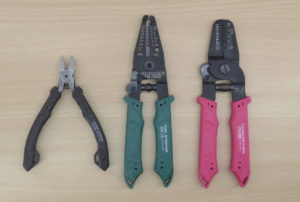
1) The first step is to cut off some wire. The length is totally up to you.
2) Next, the wire must be stripped.
If you are not sure how many insulation you should strip off, then have a look at the next picture. The picture shows were you have to make the crimps. If you use also the PA-09, then you have to make two crimps: the “insulation crimp” and the “wire crimp”. As you can see on the picture, only a small part of the wire has to be stripped off.
3) Then, the first crimp has to made. It is totally up to you, whether to start with the insulation or the wire crimp. I personally prefer to start with the insulation crimp:
4) If the first crimp was successful, the other crimp has to be made. As I started with the insulation crimp, I have to do the wire crimp next.
If you did both crimps, your connector should now look like this:
As you can see, the wire crimp looks fine but the insulation crimp looks a bit sloppy. In particular, the connector has been “drilled” through the insulation. If an original crimp tool was used, the insulation would be coated by the lower part of connector. The “damaged” insulation cannot be avoided if such generic crimp tools are used. The crimp mechanism of the original tools is more complex, e.g., two coils are used to perfectly coat the insulation by the lower part of the connector. Nonetheless, the achieved crimping quality should be sufficient for many applications.
5) The final step is to add a shell to the connector:
6) The same steps have to be applied to the other end of the wire. If everything is executed correctly, the final result should look like this:
Video Tutorial:
Another related video about red and black jumper wires:
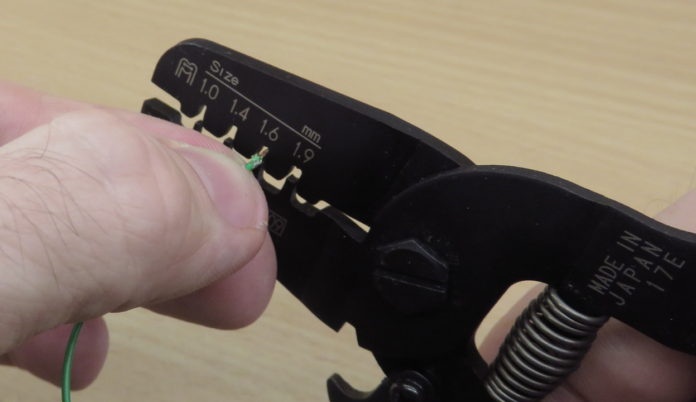
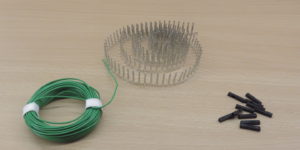
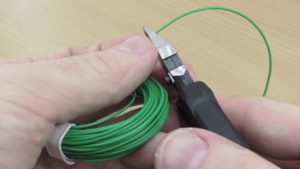
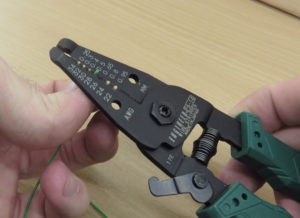
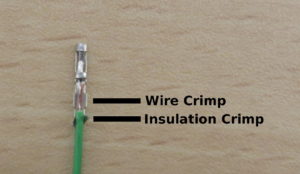
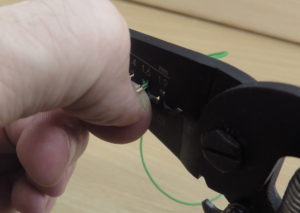
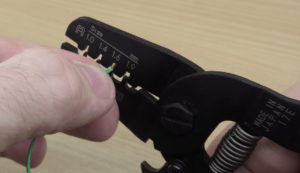
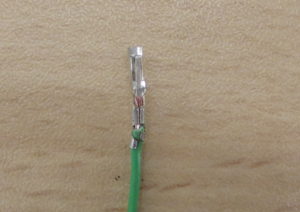
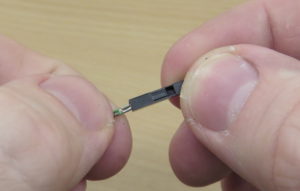
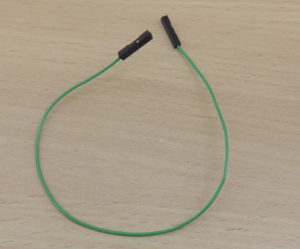
[…] When I was looking for such Y-shaped jumper wires on shopping portals, I was a bit surprised that I could barely find any offer. Therefore, I decided to make my own Y-shaped jumper wire. If you are new with crimping connectors, it makes sense to have a look at my previous crimping tutorial. […]
Nice post, but I have to say that you have used the wrong crimp tool for the job. Engineer PA-09 is made for F-Crimp in both conductor AND insulation (parallel, non-triangle shaped jaws), while the Berg/Dupont crimp tool is made for crimping a super-tight F-Crimp in the conductor and a cat ear crimp in the insulation. The original Dupont connector (mini-PV) has wing/triangle shaped insulation jaws. They may work with other crimp tools, such as Molex, but you should always use the correct tool for the job.
Great article btw! ;)
I am using the PA-09 as well as the PA-20 for crimping the DuPont connector. That is the 1.6mm die for the wire crimp and the 1.9mm die for the insulation crimp. I have tried narrower dies for each, but then, it is pretty hard to remove the crimp terminal from the tool.
Which dies do you use? It looks like it is 1.6mm for both.
Regards,
Sven
To be honest, I use sometimes different dies. If it does not work, you can use some pliers and give a decent amount of pressure to the connectors. Normally, this does not have an negative effect on the functionality but helps a lot in order to get the connector into the die.
Just a simple question, came across this tool, will it able to strip the wire and crimp properly?
If you search under eBay “Professional Automatic Wire Striper Cutter Stripper Crimper Pliers Terminal Tool”.